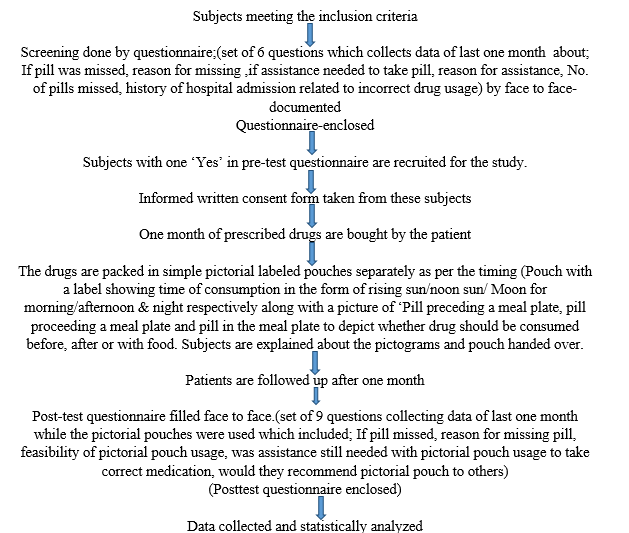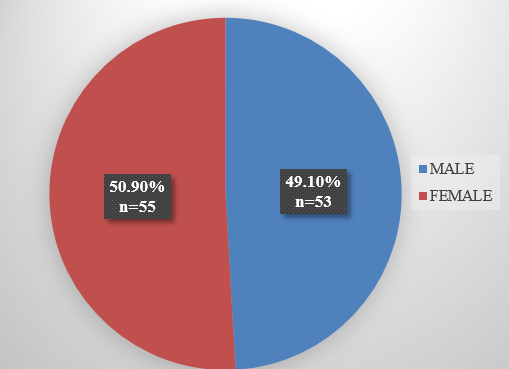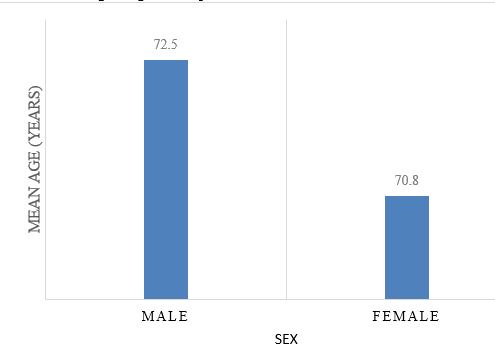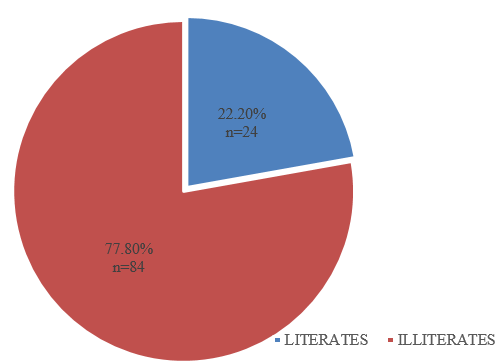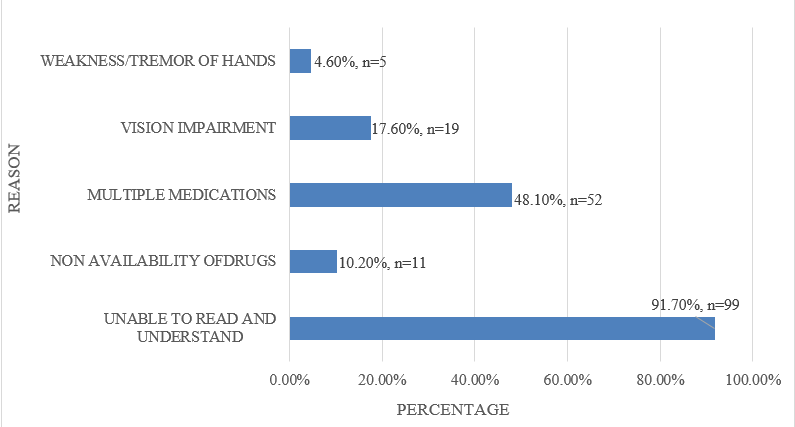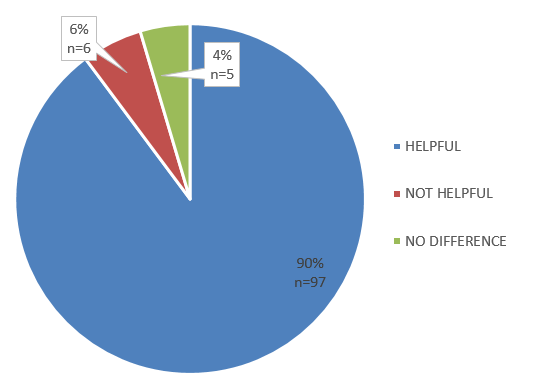Introduction
According to the global demographic trend, countries have experienced aging of the population with time. The three key demographic changes that have contributed to population aging are declining fertility, reduction in mortality and increasing survival at older ages which reflected in a shift in the age structure from young to old.Reduced mortality may be due to reasons like economic well-being, better health care system, good medicines and availability of better medicines.1, 2
According to Population Census 2011, there are nearly 104 million elderly persons (aged 60 years or above) in India of which 53 million are females and 51 million are males. The elderly population in India has been steadily increasing over time, from 5.6% in 1961 the proportion has increased to 8.6% in 2011 and is expected to rise to 19% by 2050 and almost 34% of the entire Indian population by the end of this century. 1
This increasing population of the elderly poses both social and financial challenges and also puts enormous strain on the health system especially due to the increasing number of non-communicable diseases. In India, multiple social factors like fewer children in each family, more employment opportunities for women who were customarily taking care of elderly in each family, rapid urbanization, migration and increased number of nuclear families have elevated the need to take care of the elderly and to focus on geriatric issues. In India, the elderly are a heterogeneous population with variations in morbidity across several variables like gender, location, and socioeconomic status, as well as great diversity in culture and religion. Therefore, there is a need to address the medical and socioeconomic problems of this vulnerable group and promote their healthy aging. 3
According to the 2011 census done in India, the literacy rate among the elderly females (28.5%) was less than half the literacy rate in elderly males (59.1%). Also, the literacy rate of the rural population (34.2%) was almost half of their counterparts in urban areas (66%). It was also seen that the most common disability in the elderly was loco-motor followed by visual disability (25%). 1
For an elderly among the many problems the correct drug consumption may be a problem because of various reasons like language, low literacy level, eye problems most common refractive errors and cataract, no assistance, hearing impairment, poor memory, polypharmacy and multimorbidity.
To achieve the optimal pharmaceutical treatment, patients must receive the correct drugs, in the correct dose, at the correct time. 4 But often, one or more of these conditions are not met, and medication administration is associated with a high number of medication errors. 5, 6, 7
The main intention of pictograms is to ease patient adherence and to reduce the potential risks or errors associated with the use of medications as medication use instructions, such as the leaflets accompanying medicinal products, are often written at a high readability level. This can lead to the misuse of certain medications, low treatment adherence, and as a result, inferior treatment outcomes. 8, 9 Pictograms consist of appropriately designed visual forms of health-related information, illustrating various aspects associated with the use of medicines, for example, the dosage, form of medication, or specific precautions. 10
One explanation for why pictographs may work is the Dual Coding theory, first proposed by Paivio in 1971. 11 The theory tells us that the human memory uses two interactive stores – verbal representations and mental images. When exposed to an image the verbal memory may be triggered reinforcing memory traces and subsequent recall. 12
Many of the physicians are unable to communicate effectively with the elderly patientdue to various reasons like time constraint, high patient load and the role of the pharmacist is limited solely to dispensing medicines. Therefore, a good pharmaceutical care is a rarity.
This study is based on a practical problem faced daily in the hospital and pharmacy settings in India and an easy, innovative method like pictograms can be used to dispense medicines to help the elderly. This study is an Observational questionnaire-based study done in a geriatric clinic at JSS Medical college hospital, Mysuru, Karnataka.
Objectives
1. Primary: To assess the impact of pictorial labeled medicines on medication compliance in the elderly.
2. Secondary: To analyze the attitude and acceptance of using pictograms for drug dispensing among the elderly.
Materials and Methods
This was a prospective observational study carried out from May 2019 to July 2019 in the geriatric OPD of JSS Medical College Hospital, Mysore, Karnataka. Ethical clearance was obtained from the Institutional ethical committee. Written informed consent was taken from willing patients before handing out separate pictogram labelled pouches.
Sample Size
Assuming that at least 60 percent of the geriatric population who undergo the intervention would get benefited with a precision of 8%; α level of 5%, a sample size of 145 would be required. However only 108 samples were collected due to the time limitation.
Conclusion
Basic demographic, clinical and other necessary details of the patient were noted in the questionnaire- age, sex, address, occupation, illness and duration of illness and number of drugs taken. These were collected by personal interviews of the patients/ caretaker or the OPD card of the patient.
Statistical Analysis Plan
The collected data will be entered into MS Excel sheet followed by the analysis using SPSS version 22(licensed to JSSAHER). The demographic character will be represented using arithmetic mean and percentages. The pre and post comparison of the intervention will be done using McNemar’s χ2 test. A p value of less than 0.05 is interpreted as statistically significant.
Results
Out of total 108 patients recruited 50.9 % were females.
As shown in figure 2, the mean age of men in the study was 72.5±8.5 years whereas the mean age of women was 70.8 ±7.5 years.
As depicted in Figure 3, among 108 patients a total of 84 patients i.e. 77.8% were illiterates.
Figure 5
Distribution of geriatric patients based on their medication compliance before introduction of pictogram pouches

Figure 5 shows that out of 108 study subjects, a significant number (105 patients i.e. 97%) were non-compliant to their regular treatment.
It was found that the most common cause for non-compliance was attributed to illiteracy in 99 patients (92%) followed by multiple medications in almost 50 %. Vision impairment attributed to 18%. Weakness or hand tremors appeared to be the least common cause seen in 5 patients (4.6%).
Most of the patients had multiple reasons for missing, hence the cumulative percentage is not 100.
Table 1
Distribution of patients as per hospitalization due to over/under usage of drugs
| Hospitalization | ||
| YES | NO | |
| Number of patients | 14 | 94 |
| Percentage of patients | 13% | 87% |
As depicted in Table 1, it was observed that among the 108 subjects 14 were hospitalized due to incorrect drug consumption leading to the deterioration of their illness/condition.
Figure 7
Distribution of patients as per medication compliance after introduction of pictogram pouches

As shown in Figure 7, After 1 month of using pictogram pouches in geriatric patients, 105 patients(3%) missed pills in the last month compared to 97% of patients who had previously missed before pictogram pouch use.
As depicted inFigure 8, a total of 97 (90%) of patients found it to be helpful. however 6 patients did not find it helpful and 5 patients did not find much difference. Nevertheless, the family of those 5 patients was happy with pictogram pouches as they found it easier to administer drugs for the patients and they believe that it will be helpful for other patients also.
Table 2
Distribution of patients as per requirement of assistance after usage of pictogram pouches for one month
| Frequency | Percentage | |
| Yes | 11 | 10.2 |
| No | 97 | 89.8 |
It was observed that the majority of the subjects i.e. 90% found the pictogram helpful, did not require assistance and were able to self-administer the pills. However, 10% of the subjects required assistance.
Figure 9
Distribution of patients as per requirement of assistance for medication management after introduction of pictogram pouches.
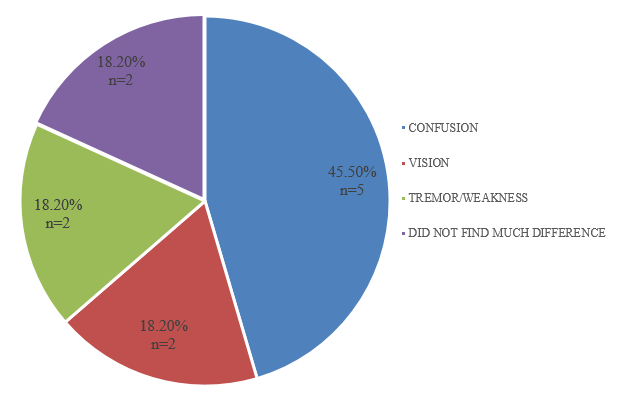
Among 11 subjects who did not find pictograms helpful or did not find much difference, 5 of the patients found the pictogram confusing especially between the pictograms depicting morning and afternoon.
Figure 10
Distribution of patients as per their willingness to recommend pictogram pouches to family and friends
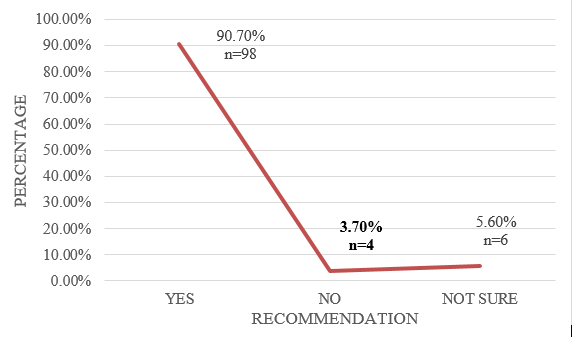
After the analysis ofpost-test questionnairesit was noted that 98 patients i.e., 91% were happy to recommend the pictogram pouches to family and friends.
Table 3
Distribution of patient compliance before and after using pictograms pouches
| Compliance | Total | P value | ||
| Yes | No | |||
| Before Pictogram pouch | 3(3%) | 105(97%) | 108 | <0.001 |
| After Pictogram pouch | 105(97%) | 3(3%) | 108 | |
There has been a positive association between compliance to medication and pictogram pouch usage .97% of patients were compliant to medication regimen after introduction to pictogram pouch as shown by a significant p value of p <0.001.
Discussion
This study was conducted in geriatric OPD in JSS Medical College Hospital, Mysore, Karnataka for a period of three months with a total study population of 108 elderly patients with polypharmacy who met the inclusion criteria. The study was an attempt to evaluate the ease of pictogram use in the elderly, determine the compliance to medication after using pictogram pouches and satisfaction with the same. The primary objective of the study was to find the compliance of patients to medication use after the introduction of pictograms. Ideally, the patient should know the details of the medication being consumed which include the timing, dosage, illness for which they are taking, desired effect, precautions, and side effects.
The age and gender did not seem to make a major impact on compliance with medication. Ninety seven percent of the patients were non-compliant before the introduction of pictogram pouches. All the study subjects needed assistance while taking correct medications. Most of the elderly patients in the study were illiterates and found it difficult to understand and take the correct medication at the correct time leading to adverse effects including poor control of their illness and even hospitalization in 13% of the subjects.
The primary objective of the study was achieved with significant (97%) number of patients being compliant to medication after intervention with pictogram pouches. 90% of the patients showed positive attitude to pictogram pouches as it made it easy for them to consume medications. It was also seen that the caretakers of those subjects found it easier to administer medications using pictogram pouches than with the conventional method of drug dispense.
As shown in Figure 9, eleven subjects out of 108 did not find the pictogram pouches helpful. The reason stated by 5 of the subjects was difficulty to differentiate between pictograms labeled morning and afternoon. However the baseline cognition was not formally assessed during enrollment to the study. This could be addressed by be better patient education and alternative pictogram depicting the same.
The study showed a positive response with 91% of the patients accepting the pictogram pouches and willing to recommend the pictogram pouches to their family and friends.
A significant association between compliance to medication and pictogram pouch usage was confirmed with a p value <0.001. Hence the inclusion of pictogram labeled pouches in drug dispensaries will facilitate most of the elderly patients to take the correct medication at the right time and prescribed dose. This will lead to better symptom control, reduced incidence of adverse drug events and hospitalization due to improper drug usage.
A recent study done in 2015 in Hong Kong to observe the benefit of pharmaceutical pictograms in improving the comprehension of medication information in elderly at the University of Hong Kong with 50 elderly patients showed thatthe addition of pharmaceutical pictograms significantly improved the comprehension for medication information among the elderly patients.13 Comprehension was tested in the experimental group of 25 members showing pictograms depicting instructions on the method of drug-taking, the number of times to take drugs, storage methods and warnings on five drugs. The subjects were asked to convey the instructions and information depicted for each drug and comprehension assessed. The patient satisfaction was also determined at the end of the study.
Although the sample size was one fourth the study population of the current study, the percentage of male and female in the experimental group are similar in both. 84% of the subjects found the pictograms helpful compared to 90% in our study which is in favor of the present study. Fifty two percent of the subjects were illiterate compared to 78% in our study which could be because of the better literacy rate of the elderly in Hong Kong. In both the studies it was seen that education level played a critical role in understanding the instructions.
Another study done in Netherlands in 2016 assessed the risk of false confidence in understanding the pictorial representation in low literate patients. 14 It was seen that low-literates have more difficulty in understanding pictograms compared to literates and for them, the pictograms should be familiar and simple meanwhile depicting the intake and effect of medicine. In our study, illiterate patients also preferred simple and understandable pictograms.
A multi center pilot study was done in 2018 in Poland to evaluate the pharmaceutical pictogram use in 68 elderly patients. 15 The primary objective was to check for comprehension while the secondary objectives were to test the recall of pictograms. The study was done in two phases. In the first phase comprehension of 12 pictograms was evaluated and the pictogram with more than 66% was selected for the second phase in which translucency of the pictogram was seen. The study, however, had a majority of female patients with a mean age of 72.15 years. The majority of the subjects had average or low health literacy similar to the study being done.
The present study is one of its kinds done in the recent past in India, to evaluate medication compliance and patient satisfaction where the role of pharmacists is limited to drug dispensing only. Due to the varied culture, language, low health literacy in the geriatric population and increasing number of geriatric patients there is a good research potential.
However, the study had some limitations. The calculated sample size of 145 was not met within the given sample study period of 3 months and a sample size of 108 subjects was achieved. Formal assessment of cognitive function of the patient was not done, only the short-term memory was assessed by the recall of pictogram meaning and 3 object recall test. Therefore the chance of confusing pictograms is a possibility leading to adverse drug events. This can be minimized by better patient counseling and addition of written information to help understand and memorize the pictograms. Recall bias was present in majority of the patients. Therefore, history of number of pills missed in one was not significant in this study. The pictogram pouches given were not long-lasting as the study did not encourage the usage of plastic. Based on the patient feedback of requiring more durable pouches, recyclable or biodegradable long-lasting pouches that are cost-effective can be used.
Pictogram pouches can be especially used in rural communities where the literacy level is very low. The local community or the government should take an initiative to introduce pictogram pouches in pharmacy shops. A separate geriatric counter can be added where adequate education of the pictograms is given before dispensing medications.
Conclusion
This study was conducted at geriatric OPD at JSS Medical College hospital, Mysore, Karnataka with a total of 108 subjects who had Polypharmacy for a period of three months. The study done showed that the inclusion of pictogram labeled pouches in dispensing medicines made a significant change in the compliance of the elderly patients having Polypharmacy. Literacy level was an important factor in determining compliance with regular medication as most of the patients with non-compliance to medication were illiterates. The majority of the elderly patients in the study found pictogram pouches to be very helpful in taking the right medications regularly at the right time without missing or mixing any medications. They also preferred to get further medications in pictogram labeled pouches. A large number of subjects want to recommend these pictogram pouches to their family and friends as they believe that it will be helpful for the others as well.
Pictogram pouches will be a cost-effective, simple and innovative method to improve patient compliance to medication and may also make drug dispensing easier to the pharmacists.
Further research can be conducted in primary health centers/ community health centers using the results of the present study as pilot analysis. Research can also be done to evaluate the comprehension and compliance of pictograms depicting other information required by the patient like storage, precautions and side effects. Pictograms depicting the cause for taking the drug can also be introduced for better patient information. A study can be done to know the optimum number of pictograms for each drug.
With this study it can be recommended that pharmacy outlets can dispense drugs in the form of user-friendly, biodegradable pictogram pouches to the elderly, as it will be feasible in rural as well as urban settings. This would minimize hospital admission and therefore the National health burden. An initiative by the Government of India to dispense medicines in pictogram pouches will be an innovative, economical method and will also have a positive impact on geriatric well-being.

